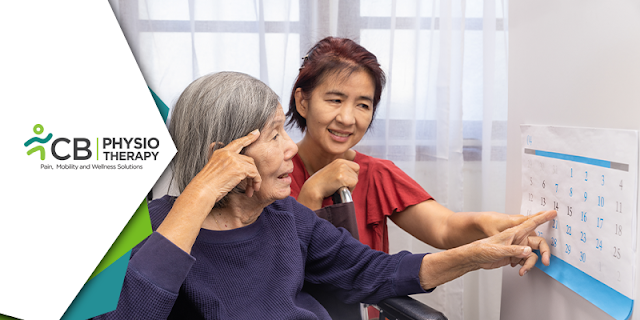Dementia | Top 10 Exercises for Patients with Alzheimer’s Disease
World Alzheimer’s Day is observed on the 24th of September every year, to raise awareness about Alzheimer’s disease. This day is viewed as an opportunity to find new ways of fighting the effects of this disease and regulate the increasing number of Alzheimer’s cases all over the world. Alzheimer's disease or Dementia is a progressive brain disease, that affects the brain cell and leads to loss of body function, behavior changes, and memory loss. Usually, ignorance about the early symptoms can lead to the worsening of the situation. Studies have shown that exercises are beneficial for people suffering from Alzheimer’s disease. Exercising not only improves strength and endurance but also improves cardiovascular fitness. Physiotherapists play an important role in recommending exercises for patients with Alzheimer’s disease and tailoring routines to meet the needs of each patient. Listed below are a few exercises that can be recommended for an individual suffering from Alzheimer’s disease.
Exercising helps in the maintenance of Motor skills, Communication skills, balance, strength, and Physical functioning.
Sideway Walking:
- Stand with the feet together and knees slightly bent.
- Step sideways in a controlled manner and move one foot to the side first.
- Then move the other foot to join it.
- Avoid dropping the hips while stepping.
- Perform 10 steps from each side of the room to the other.
Cross Leg Walking:
- Cross the right foot over the left.
- Bring the left foot to join it.
- Attempt 5 cross-steps on each side.
- Place the fingers against a wall for stability.
- The smaller the step, the more the patient can work on the balance.
Heel-to-Toe Walk:
- Stand upright and place the right heel on the floor directly in front of the left toe.
- Then repeat the same with the left heel.
- Make sure and keep looking forward at all times.
- Place the fingers against a wall for stability.
- Try to perform at least 5 steps.
- As the patient progresses, move away from the wall.
Retracing the Steps:
- Just before sleeping, the patient recalls everything, what he/she did that day from the moment he/she woke up.
- If necessary the other person can help him/her remember but should be asked to repeat what he/she said and ask him/her questions related to the same, like, what color clothes he/she was wearing? Who came to visit him/her? What did he/she eat?
- The exercises should be preferably carried out in chronological order and in as much detail as possible.
Using the opposite hand:
Encourage the patient to use his/her less dominant hand more frequently, e.g. if he/she is right-handed, ask him/her to brush the teeth, brush the hair, pick up cutlery, or hold an object with the left hand. These exercises will stimulate the opposite side of the brain, which can result in rapid expansion in the parts of the cerebral cortex that are responsible for processing tactile information, and thus can improve mental health.
Ride a Stationary Bike:
Simple and repetitive movements are ideal for people with Alzheimer’s disease. In addition to improving movement, riding on a stationary bike also improves cardiovascular fitness.
Lifting Weights:
Strengthening training is an important exercise to include in a regular routine as lifting weights has also been found to be beneficial for cognitive improvements. Individuals with Alzheimer’s disease should lift weights only under the supervision of a physiotherapist.
Touching and Recognizing:
Our sense of touch passes above certain processes in the brain, triggering feelings and memories. Put some objects in a bag and ask the patient to touch and identify the objects without looking at them. Our brain usually needs to see the object so that it can distinguish between them, using touch to identify subtle differences increases stimulation in areas of the brain that process tactile information, strengthening synapses in the brain.
Scrabble:
- Engage the mind in framing a new word every time the opponent sets a new target.
- Scrabble requires logical thinking.
- Demands the right strategy on putting a new word and where to put it for more points.
- So, Scrabble is an awesome brain exercise for Alzheimer's patients.
Chess:
- Chess is effective for cognitive functioning
- It is one of the best brain exercises for mental exercise.
- Playing chess with someone can also help people with Alzheimer's disease.
Physiotherapy can’t reverse the effects of Alzheimer’s disease, but it can help slow its onset. Physiotherapists are experts who work to ensure that the patient can continue to live an active life for as long as possible.
